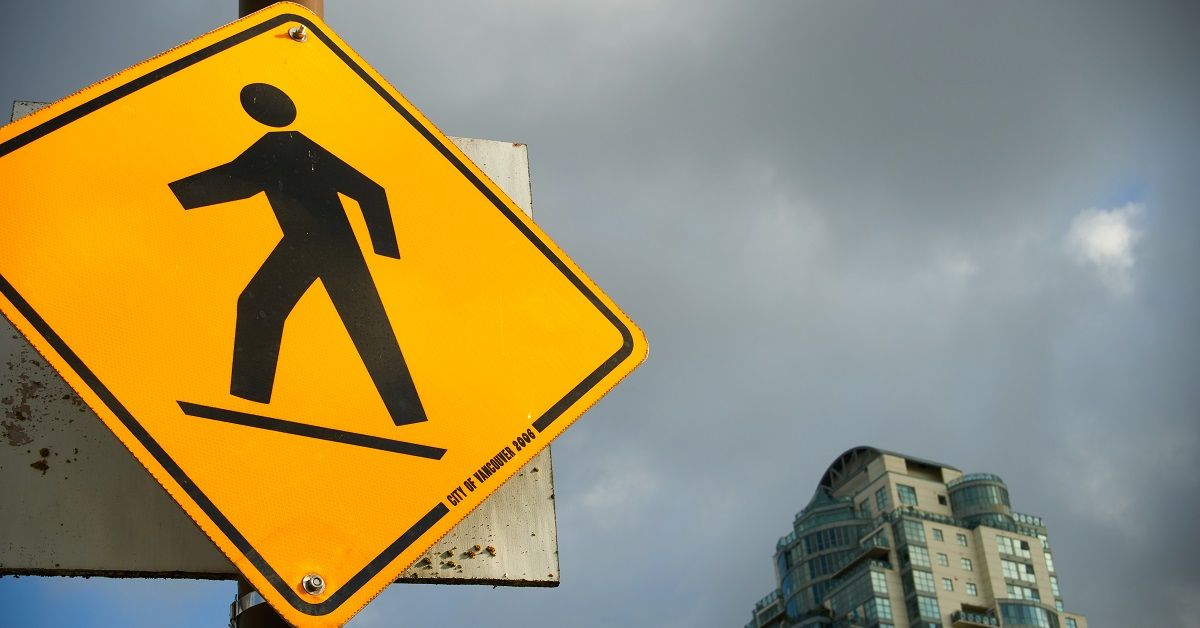
Vancouver has seen a significant decrease in road traffic amid the coronavirus pandemic. Although there are fewer cars on the roads, many people still venture out on foot and on bikes to get exercise and fresh air while observing social distancing.
To ensure the safety of pedestrians and make use of existing infrastructure, one city councillor in Vancouver is proposing that some roads in the city be reallocated for use by pedestrians and bicyclists.
Whether this proposal passes or not, residents of Vancouver and other cities in British Columbia can take steps to reduce the risk of pedestrian accidents. A decrease in traffic does not mean that there are no cars on the road, so it is still important to be cautious when you’re on foot.
If you have been injured in a pedestrian accident, please don’t hesitate to contact Klein Lawyers at (604) 874-7171 today. Your consultation is free!
5 Tips to Avoid Pedestrian Accidents
In most instances, careless driving is the cause of accidents involving motor vehicles and pedestrians. Considering the difference in size and weight between a person on foot and a car, even slow-speed pedestrian accidents can result in serious injuries.
Although the driver has a responsibility to operate their vehicle carefully, pedestrians can also take steps to ensure that they stay safe while walking. These steps include:
1. Always Use Marked Crosswalks
In addition to providing pedestrians with a safe place to cross the road, crosswalks are also designed with drivers in mind. Their positioning at intersections and along roadways is based in part on maximizing the visibility of pedestrians at a distance.
When pedestrians cross the road outside of a designated crossing zone, drivers may be rounding a corner or making a turn. As a result, they have less time to apply the brakes, making a collision more likely.
Furthermore, the pedestrian right of way only applies when legally crossing in a crosswalk. If you pursue a personal injury claim (tort claim) against the driver because they were speeding, texting while driving, or otherwise negligent, you may be found partially at fault and be awarded less in compensation if you were jaywalking or crossing against the signal.
2. Look Both Ways
The advice we receive as children maintains its relevance throughout our lives. As adults our ability to recognize and adjust for danger may evolve, but crossing the street is so commonplace that it is possible to overlook the importance of checking on both sides before venturing into the roadway.
As a pedestrian, think of a crosswalk the way drivers would think of a stop sign. Stop walking when you reach the edge of the road. Then look left, look right, and look left again before proceeding.
3. Reduce Distractions
Distracted driving is a major problem in Vancouver and throughout British Columbia. However, walking while using a mobile phone is also hazardous.
Whether you’re on foot or behind the wheel, cell phone usage compromises the manual, visual, and cognitive skills you need to move about safely. The dangers of distracted walking include:
- Walking into traffic
- Crossing the road outside of a marked crosswalk
- Failing to observe “Walk” and “Don’t Walk” signals
- Tripping and falling while crossing the road
- Failing to notice hazards such as potholes, cracks in the pavement, etc.
- Walking into parked cars
- Walking behind a car that is backing out of a parking space
When you’re out for a walk, hold off on reading and replying to that text or taking that phone call. Handling your phone while you’re on the move increases your risk of being injured in a pedestrian accident.
4. Dress for Visibility at Night
Pedestrian accidents can happen at any time of day. However, the risk of collisions increases after the sun sets.
Negligence on the part of the driver is still the leading cause of pedestrian accidents that occur at night, but visibility is another important factor. Although you can’t control other drivers, you can take simple steps to enhance your visibility.
If you go out walking after dark, remember to wear a light-colored shirt and pants. It may also be worthwhile to place reflective tape on the front and back of your clothing. When headlights hit reflective tape, the light intensifies, improving your visibility to nearby drivers.
5. Recognize Signs of Careless Driving
Crosswalks should afford you a fairly robust view of traffic from all directions. In addition to noting the presence of cars, take the extra time to assess the way they are driving before you cross the road.
Reckless driving isn’t always visible from the pedestrian’s vantage point, and the driver may commit an error after you start crossing the street. However, if you see the following warning signs, it may be worth waiting to cross until after the car passes:
- Speeding
- Aggressive driving, such as tailgating other cars or weaving in and out of traffic
- Drifting into other lanes
- Texting or talking on the phone, loud music, and other distractions
- Running red lights or stop signs
Drivers exhibiting these behaviors may not be paying attention to the road. They might be unable to stop in time if you cross in front of them. Waiting until the careless driver passes can make all the difference in preventing a pedestrian accident.
How Klein Lawyers Can Help with Your Pedestrian Accident
If you or a loved one has been hit by a car, you may be facing significant medical expenses, significant time away from work, and other potentially life-altering impacts. An experienced pedestrian accident lawyer can help you with the process of filing for ICBC benefits. If the driver’s negligence caused the collision, a lawyer can pursue compensation on your behalf in a tort claim.
For a free review of your case, please call Klein Lawyers at (604) 874-7171 or complete our online form. Our lawyers serve injured pedestrians in Vancouver and communities throughout British Columbia.










